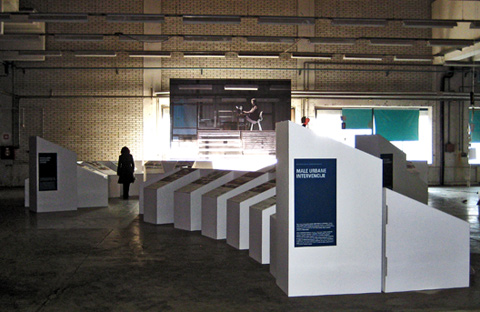


Whenever and wherever
a piece of new “architecture” - or de
facto a new building - is wanted, first and foremost the essential questions
about the ultimate mission of it should be found and considered – and above all
- without getting stuck into current conventions. This is increasingly
important in the times of local economical scarcity and global exploitation of
eco system. As British professor and architect Jeremy Till has often pointed
out, those questions might help to evaluate if there is a need for new building
at all – or at least how the current resources (whatever they include) could be
used more cleverly. Small architecture
is aiming to achieve big change by small scale interventions. Small projects
can of course serve as a test laboratory for large ones, but in many cases and
with clever design, they can also accomplish their demanding mission more
precisely and efficiently than a big-size project.

Small architecture can
be more ecological, adaptable and flexible. Small architecture can fit into
urban gaps, rural areas or any other spaces. It is unexpected, it creates
surprise and is not standing in the center of the happening, prestigious tourist
areas or any other central spots. Small architecture creates its own story
about tourism, hospitality, gastronomy, temporary living, or other small-scale
enterprise. It proves that touristic business ideas can be created almost
everywhere, that successful business ideas are having strong, but still short
ideas in the background.
Exhibition is divided
into three categories: Hospitality architecture, Small urban interventions and Prefabricated
units. The first category is showing small tourist buildings that are connected
with wine presentations, gastronomic enjoyments, spa facilities and other
temporary living requirements. The second category shows urban small scale
buildings that were put into city gaps, unused areas or urban parks. They were
created to attract new customers, to give new uses of the urban space and to
show a statement how architecture can make a positive dialogue with the city
inhabitants and society. Prefabricated units in the third category of the
exhibition are on the other hand created for unknown locations and unknown clients.
They are designed to show maximal flexibility of use and best prefabrication of
certain material within the limits of reasonable budget.

All these three
categories of the small- scale buildings were selected to show potentials that
small scale architectural designs can bring for the development of the
construction business – and the whole society. They could be built also in
Slovenia: Ljubljana alone has still got a number of forgotten street corners,
half-used parking lots, shaded urban gaps or abandoned factories (like this
was) with prime locations – not to talk about many smaller towns and villages. To
find at least some of the potential hidden in such places does not always need a
big financial investment, maybe not suppressive bureaucratic procedures either.
If the idea and its realization is really good for certain location, it can
start a benign long-term development in the whole neighborhood or region even
if the original project was meant to be just “temporary”.
